In a West Sacramento lab, Kirsten Kehlet, a product developer for The Better Meat Co., works with a team of microbiologists, chemical engineers, chefs and food scientists to develop plant-based ingredients that blend seamlessly with meat.
Plant proteins such as pea, bamboo and algae are combined with fibers, fats and flavors to create allergen-free, clean label formulas that mimic the characteristics of animal protein, says Kehlet — clean label foods have as few (and recognizable) ingredients as possible. Those formulas are designed to be blended with animal meats such as ground beef and sausage up to 50 percent, reducing the number of animals used for food and increasing the nutritional profile.
In Davis, Douglas Cook, cofounder and chief scientific officer of NuCicer, is developing novel varieties of chickpea by breeding the modern-day chickpea with its wild relatives, separated by as much as 100,000 years, to produce various lines of chickpeas that offer a single ingredient to meet nutritional needs, reduce agriculture’s environmental footprint and fuel the alternative-meat sector.
The two startups, launched in 2018 and 2019, respectively, are the first companies to bring the alternative-protein market to the Capital Region. Efforts to advance the emerging food market using science and technology have ignited worldwide to address the global challenge of food access and proper nutrition for a growing population and the unsustainable environmental and ethical practices of industrial animal agriculture as it barrels toward the planet’s capacity on land and at sea.
The market is projected to change where our protein comes from and how it’s produced, essentially using plants, microbes and animal cells to recapitulate the experience of conventional meat, egg and dairy products, says Amy Huang, who works with universities to solve technological hurdles in the alternative-protein space for The Good Food Institute, a Washington, D.C.-based think tank advancing alternative proteins.
Plant-based products, like those produced by The Better Meat Co. and NuCicer, are expected to dominate the alternative-protein space, followed by cultivated meat technology, known as cellular agriculture, which produces meat from animal cells instead of raising and slaughtering animals. The most technologically advanced form of alternative protein, cultivated meat is projected to be commercially available worldwide in 20-30 years.
In September, UC Davis was awarded the first federal funding given to a university to research cultivated meat — a $3.55 million grant from the National Science Foundation Growing Convergence Research program — positioning the Capital Region to serve as a hub of the advancing technology.
Blending Plants and Meat
Shortly after it launched, The Better Meat Co. partnered with Perdue Foods, a division of Perdue Farms ($7.3 billion in revenue last year, according to Forbes) to launch Perdue’s first line of Chicken Plus products for children — tenders, nuggets and patties — blended with The Better Meat Co.’s plant-based protein formulas.
The Better Meat Co.’s plant protein formulas can be blended with
animal meats such as ground beef and sausage up to 50 percent to
create a variety of food. (Photo courtesy of The Better Meat Co.)
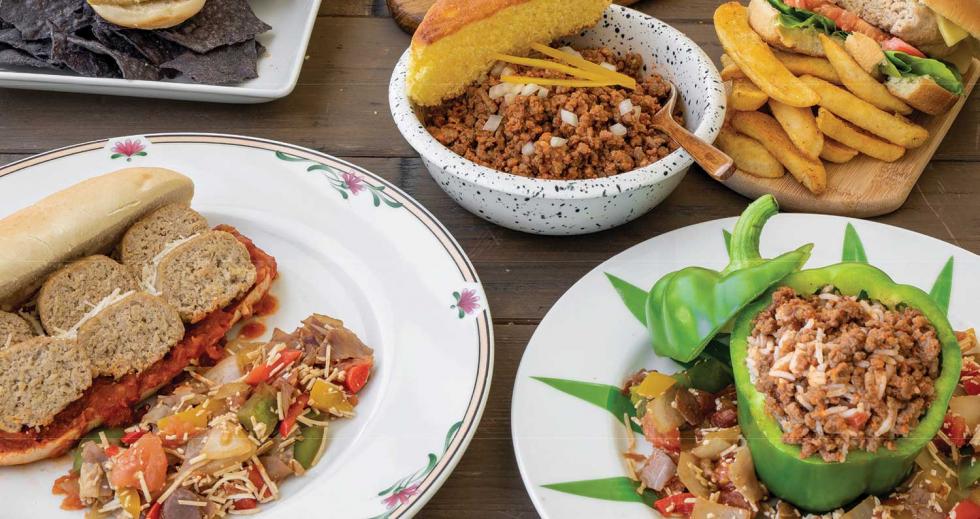
That partnership positioned The Better Meat Co. as a viable competitor in the plant-based protein space early on and led the company to surpass its 2019 financial goals. While revenue remains proprietary, cofounder and CEO Paul Shapiro says product sales are “tangibly making a dent in the number of chickens who are needed.” In the U.S. alone, more than 9 billion chickens were raised and slaughtered for human consumption in 2017, according to the North American Meat Institute.
Since its early partnership with Perdue, The Better Meat Co. has expanded its footprint with customized formulations to blend with beef, pork, crab and whitefish, says Kehlet, and it’s working with companies at various phases of development in each of those markets as demand for blended products increases.
Several other large meat companies — such as Maple Leaf Foods, Tyson Foods and Hormel Foods — are trending toward protein diversification as a way to remain competitive in a shifting market as consumers demand healthier food.
The Beyond Burger and the Impossible Burger — products entirely derived from plants but formulated to mimic the taste and texture of meat — launched in 2015 and 2016, respectively, and went mainstream. That’s when Todd Robertson, director of RTC Foods Innovation, a global meat company in Australia, looked for innovative alternatives in the meat space. After extensive research, Robertson reached out to The Better Meat Co.
“The attraction to The Better Meat Co. is its products are specifically made to blend with meat,” says Robertson. “And they’re so flexible, and that’s key.” The Better Meat Co. quickly adapted one of its formulas to meet the level of fiber RTC Foods Innovation required.
“A meat eater who wants to do a little bit better is going to struggle to go directly to a plant product. That’s where blending is going to be successful. At least then people can do better for themselves, and they can do better for the environment, without having to completely give up what they crave.”
TODD ROBERTSON Director, RTC Foods Innovation
The Australian company purchased 1,500 pounds of The Better Meat Co.’s plant-based protein, equivalent to 2,400 pounds of meat once hydrated. In May, the company began its rollout of blended burgers, featuring 35 percent plant protein, the first product of its kind in Australia, where meat consumption rivals that in the U.S. While Australian burger chains expressed interest in the new product, RTC Foods Innovation shifted its rollout focus toward retail as a result of the pandemic and an interest in leading the messaging around its blended products. Those products — blended beef, lamb and chicken — are expected to hit the shelves of Harris Farms Markets, a high-end grocery chain in Sydney this month, followed by additional retailers.
“A meat eater who wants to do a little bit better is going to struggle to go directly to a plant product,” says Robertson. “That’s where blending is going to be successful. At least then people can do better for themselves, and they can do better for the environment, without having to completely give up what they crave.”
Making a Better Chickpea
NuCicer, which means “new chickpea” (Cicer is the genus of chickpea), aims to disrupt the current thinking about available plant-based proteins, such as pea and soy, that come with limitations in terms of nutritional and functional properties, says Kathryn Cook, cofounder and CEO of NuCicer.
Today’s chickpeas have lost 95 percent of their genetic diversity. But NuCicer is crossing them with their wild relatives that have retained their genetic diversity. That produces a range of new traits and occasional genetic combinations, called transgressive genes, that exceed the potential of either parent. Protein content is one of those.
NuCicer is crossing chickpeas with their wild relatives that have
retained their genetic diversity to produce a range of new traits
and occasional genetic combinations that exceed either parent,
including protein content. (Photo courtesy of NuCicer)
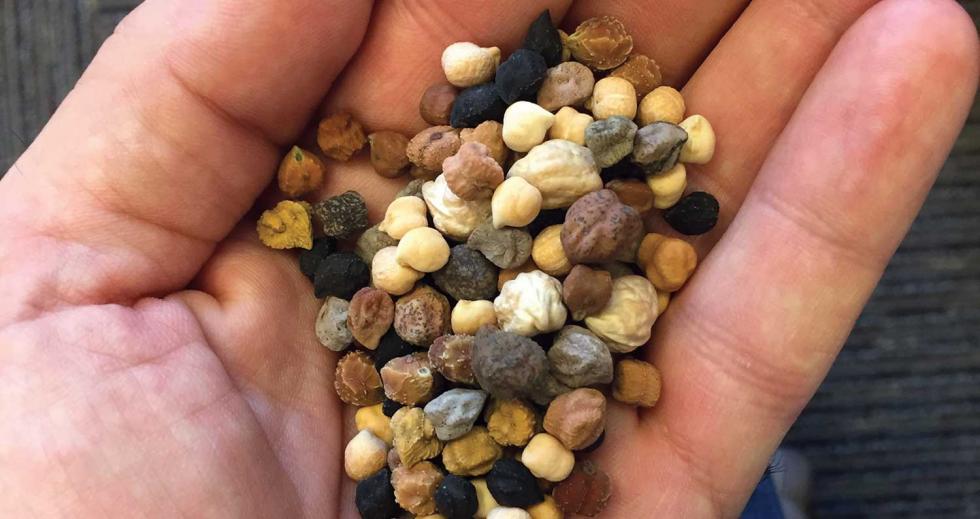
That’s the kind of research that could address what Huang says is one of the fundamental technological hurdles facing plant-based proteins. “We don’t know what the best plants are to use. We have our soy and our pea and our wheat, and that’s really where most of our plant-based protein comes from so far, but there are so many opportunities in the plant kingdom … that we haven’t even explored.”
NuCicer’s intellectual property evolved from technology and research at UC Davis, where Douglas is a professor and plant and microbial geneticist. “I think very few people are looking specifically at chickpea, and to my knowledge, there’s no one who has the breadth of genetic diversity that we’re currently playing with,” Kathryn Cook says.
“I think very few people are looking specifically at chickpea, and to my knowledge, there’s no one who has the breadth of genetic diversity that we’re currently playing with.”
KATHRYN COOK Cofounder and CEO, NuCicer
NuCicer has a long list of desired traits it’s targeting in novel varieties. For example, a chickpea with double the protein content and the appropriate amount of essential amino acids could produce a complete protein for improved nutrition. While the company is primarily targeting the alternative-protein market in the U.S. and Europe, developing regions in the world such as India that already depend on the modern chickpea (an incomplete protein) for a large percentage of its protein could benefit as well. That thinking aligns with what The Good Food Institute sees as an opportunity to leapfrog industrial animal agriculture in regions like India, where it isn’t yet a ubiquitous practice, says Huang.
NuCicer is targeting environmental impacts at the origin of food systems as well. By expanding the geographic regions where chickpeas can grow with varieties that tolerate acidic soils, heat and drought, crops could potentially be grown closer to product manufacturers, shortening the supply chain and reducing the impact of transportation.
As farming practices move toward crop rotation and the use of cover crops to improve soil health, NuCicer aims to develop a chickpea that enhances the legume’s natural ability to fix nitrogen in the soil, which is converted into nutrients for crops. That will reduce conventional agriculture’s use of synthetic nitrogen fertilizer, a contributor to watershed pollution and aquatic die-off.
And the company is breaking through the boundaries of available plant-based proteins that require additives to produce the desired nutritional profile and functional properties, such as flavor, texture and digestibility, by developing chickpeas that have the properties food, beverage and alternative meat manufacturers need in a single chickpea, Kathryn Cook says.
While NuCicer is still in its product and development phase, its timeline to bring products to market depends on how quickly it can form partnerships, assemble a supply chain and scale its resources.
Researching Cultivated Meat
The speed at which many alternative-protein companies can accelerate may hinge on university research, which Huang says could drive the development of the alternative-protein field. “That powers tech innovation and progress and commercialization, which stimulates the private sector,” she says.
And research at UC Davis has skyrocketed. After David Block, professor and chair of viticulture and enology and professor of chemical engineering at UC Davis, heard a Good Food Institute representative speak at a Food Innovation and Engineering Conference in December 2018, he and one of his chemical engineering grad students began the first research at UC Davis on cultivated meat.
That grew to two grad students, supported by fellowship grants from New Harvest, a nonprofit research institute advancing cellular agriculture and the Good Food Institute. And when the UC Davis Cultivated Meat Consortium launched in fall 2019 to serve as a nucleus of knowledge and resource sharing among those interested in the new technology, it spearheaded the opportunity to apply for the National Science Foundation grant awarded in September, harnessing the power of 13 professors, their laboratories and Ph.D. students across seven departments. That brought UC Davis’ funding to more than $4 million in research fellowships and grants to advance cultivated meat.
The goal of the five-year NSF grant is to research much of the technology about cultivated meat that’s unknown and make that knowledge public as quickly as possible, says Block, one of the grant’s principal investigators. That foundational science could launch many cultivated-meat companies into the competitive phase of development.
In addition to targeting key technological hurdles, researchers will study the industry’s viability and sustainability compared to traditional animal agriculture. While Block says some literature suggests cellular agriculture will be much more sustainable, the two processes are so different, it’s not initially clear to him whether it will be or not.
“Life cycle analyses do project, on average, that energy use will not decrease as dramatically as land use, water use … and emissions. However, compared to conventional meat production, the energy savings, up to 45 percent, are substantial,” says Huang.
Analysis of hypothetical models cited in the journal Trends in Food Science & Technology project that cultivated meat’s conventional energy use could have less of an impact on global warming than conventionally produced beef but more of an impact than conventional pork and poultry production, but it does point to the innovative potential of the industry to overcome that. “Projections are even more optimistic when taking into consideration cultivated-meat facilities could use clean energy sources at scale,” says Huang.
Even so, Block sees cellular agriculture as a supplement to animal agriculture rather than a replacement. “We need more dietary protein sources with the growing population around the world, and I don’t think that’s going to be satisfied completely by traditional agriculture using current practices,” he says. But he points out the tradition of ranching and its importance to our country and the challenges the emerging market may face to replace it.
With the new funding, Block says cultivated-meat companies and those that supply them are already reaching out, and he hopes that will lead to additional funding — and further research opportunities for roughly 30 faculty members and students in the UC Davis Cultivated Meat Consortium — as well as the formation of a hub that will attract many of the cultivated-meat companies in the Bay Area to the Capital Region.
The NSF grant will also fund continuing education classes through UC Davis, providing the industry with the latest research and knowledge, just as it does for the wine industry.
As the future of cellular agriculture evolves, Block says the researchers at UC Davis will be the ones who train future employees for cultivated-meat companies and likens it to the university’s relationship with California’s wine industry.
“One of the reasons the California (wine) industry is so strong and grew so quickly in quality is because there was a place like UC Davis that was creating a highly trained workforce, and I think that’s been really important to the state,” he says. “I can see that being similar for cultivated meat.”
—
Stay up to date on business in the Capital Region: Subscribe to the Comstock’s newsletter today.
Recommended For You

Finding a New Vegan Vision
Food entrepreneurs on the verge of opening brick-and-mortar locations retool their businesses — and find silver linings
Many Sacramento entrepreneurs, when forced to consider what it
means to launch a business during a time of crisis, realized
there could be plant-based opportunities.

The Best of Both Worlds
Sacramento restaurants look to capture meat-loving and vegan diners with one menu
How are Sacramento’s restaurateurs appealing to new diet preferences?

Meat, Water and Global Warming
Despite environmental impacts of livestock, restaurants aren’t giving up their meat
According to some ecologists and experts on global agricultural trends, our eating habits must change dramatically if we are to overcome environmental issues facing the planet and its future generations.
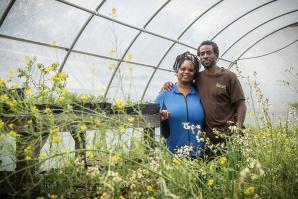
Seeds of the Future
What does it mean to be the ‘Farm-to-Fork Capital’ during the COVID-19 pandemic?
Here’s how four businesses are engaging in the Capital Region’s farm-to-fork economy and have adapted to the pandemic so far.



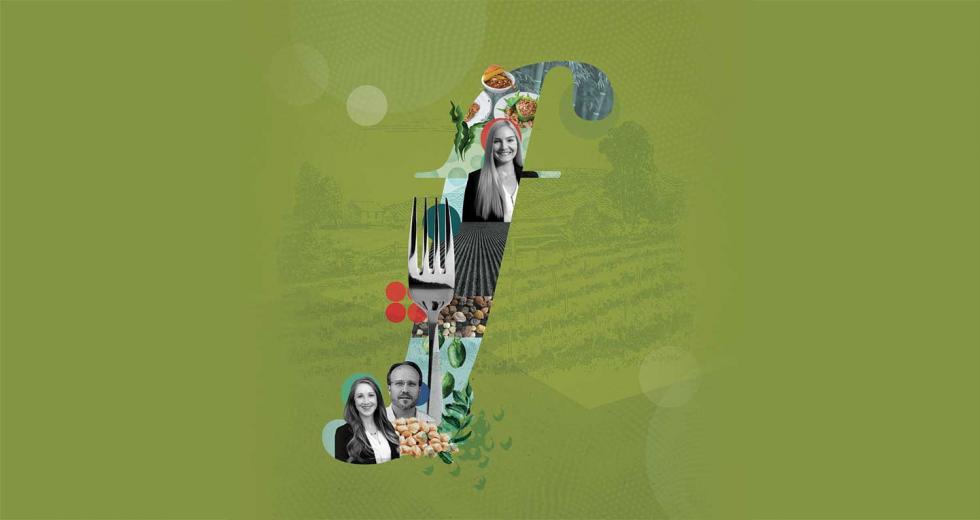
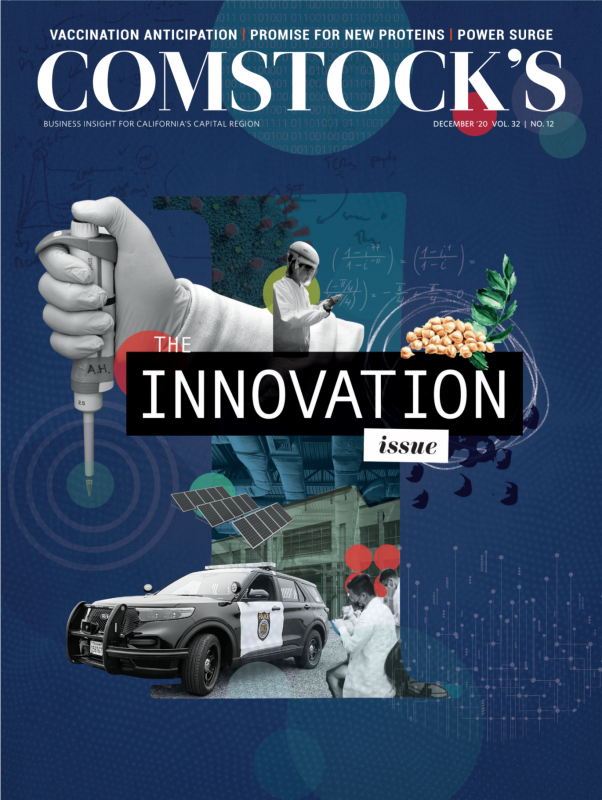
Comments
Fantastic article! Well written, informative and insightful about an important food source for the world’s future and an expanding technology for our region.
Thank you.
Mark Berry